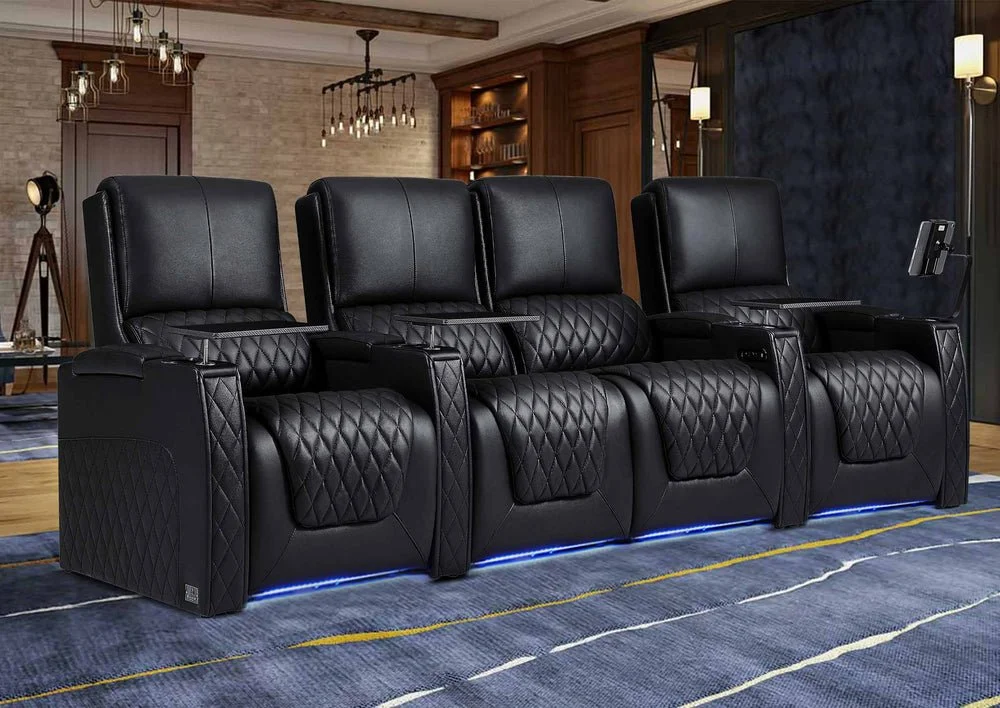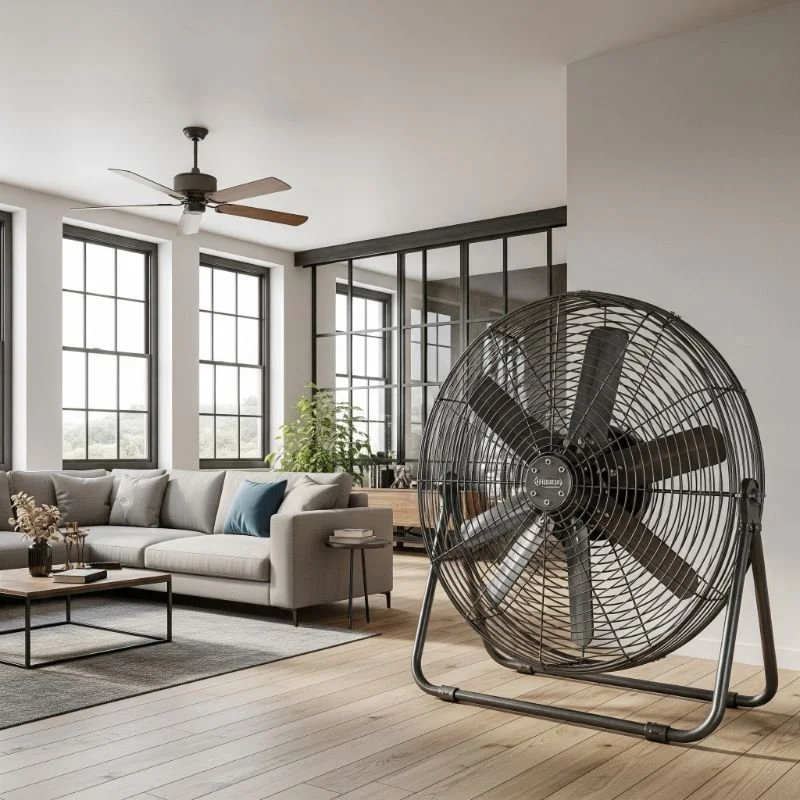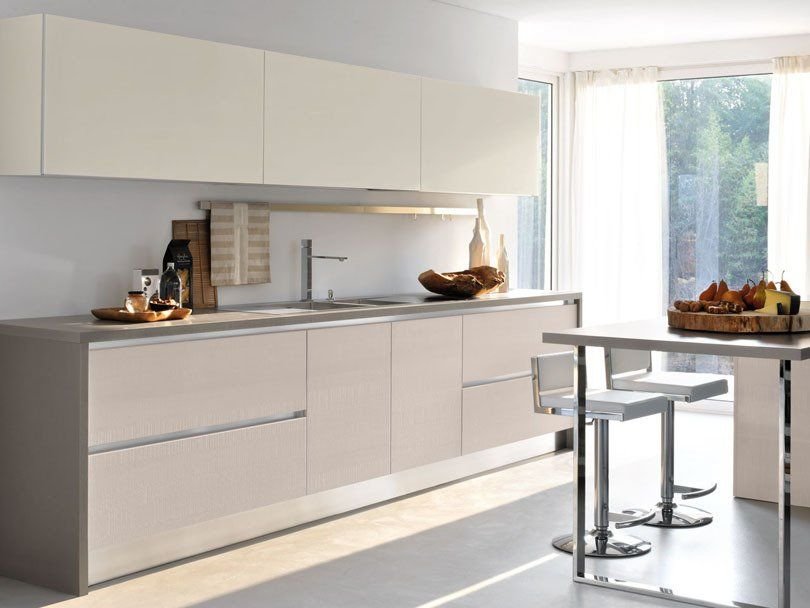Can Industrial Fans Be Used for Home Use?
Explore whether industrial fans are suitable for home use, including benefits, potential drawbacks, and how to choose the right one for your space.
The question of whether industrial fans can be effectively and safely used in a home setting is a common one. While industrial fans offer undeniable power and durability, their suitability for residential use requires careful consideration. This article delves into the pros and cons, explores potential applications, and provides guidance to help you make an informed decision in 2025. Are you considering a powerful airflow solution for your home? Let's explore if industrial fans are the right fit, and what considerations you should be aware of before taking the leap!
Why the Interest in Industrial Fans for Homes?
Before diving in, let's address the core motivation: Why are homeowners even considering industrial fans? The answer usually boils down to a few key factors:
Power & Performance: Standard box fans or ceiling fans often struggle to effectively cool larger spaces or circulate air in areas with poor ventilation. Industrial fans are designed for demanding environments and offer significantly higher airflow (measured in CFM – Cubic Feet per Minute). They can truly move air!
Durability: Industrial fans are built to withstand harsh conditions, making them incredibly durable. Homeowners might be drawn to this longevity, anticipating a fan that will last for years.
Specific Needs: Some homeowners have specific needs that standard fans can't meet, such as quickly drying a flooded basement, ventilating a workshop, or providing targeted cooling in a garage gym.
Aesthetic Appeal: For some, the utilitarian aesthetic of an industrial fan is appealing in itself, fitting a modern or minimalist design scheme.
However, it's not all upside. The raw power and robust construction of industrial fans come with potential drawbacks that must be carefully evaluated.
Industrial Fan vs. Home Fan: Key Differences
To understand the appropriateness of using industrial fans at home, it's essential to recognize the differences between these two categories.
Industrial fans typically offer significantly higher airflow (often 5,000 CFM or more) compared to home fans (typically 500-2,000 CFM). They are generally louder, often exceeding 70dB, while home fans typically operate below 60dB. Industrial fans are larger and heavier, designed for floor or wall mounting, whereas home fans are smaller and lighter, designed for tabletop, floor, or ceiling mounting.
The energy consumption of industrial fans is higher due to more powerful motors, while home fans are designed for energy efficiency. Safety features also differ: industrial fans focus on industrial safety standards (e.g., enclosed motors, blade guards), while home fans focus on residential safety standards (e.g., tip-over protection, child-safe guards). Industrial fans are typically more expensive and intended for use in factories, warehouses, construction sites, and workshops, while home fans are designed for bedrooms, living rooms, and offices.
Potential Benefits of Using Industrial Fans at Home
Despite the differences, there are specific scenarios where an industrial fan could be beneficial in a home environment.
Rapid Ventilation: After a plumbing leak, flood, or painting project, an industrial fan can quickly exhaust moisture and fumes, preventing mold growth and improving air quality.
Workshop Cooling: A large industrial fan can provide much-needed relief in a hot and stuffy workshop or garage.
Targeted Cooling in Large Spaces: In a large open-plan living area, an industrial fan can provide powerful directional airflow to cool specific zones.
Drying Damp Basements: Many basements have moisture problems. An industrial fan can significantly improve air circulation, aiding in drying and preventing musty odors. The EPA estimates that "at least 10 percent of U.S. homes have suffered from some sort of water damage," highlighting the need for effective drying solutions.
Emergency Situations: During power outages or extreme heat events, a portable industrial fan (powered by a generator or battery) can provide crucial airflow.
The Drawbacks: Why Caution is Necessary
However, the benefits must be weighed against the potential drawbacks. These are critical considerations before making a purchase.
Noise Pollution: Industrial fans are inherently noisy. The constant hum or roar can be disruptive, especially in quiet residential areas. "Noise pollution affects 250 million people worldwide," according to the World Health Organization, making it a significant public health concern. Adding a loud fan to your home contributes to this.
High Energy Consumption: The powerful motors required for industrial-grade airflow consume a significant amount of electricity, potentially leading to higher energy bills.
Safety Concerns: The powerful blades of an industrial fan pose a safety risk, especially for children and pets. The lack of residential-focused safety features, like tip-over protection or finer blade guards, is a serious concern.
Size and Weight: Industrial fans are bulky and heavy, making them difficult to move and position. This can limit their versatility and suitability for smaller homes.
Aesthetics: The industrial look may not complement the decor of all homes. Some homeowners may find them visually unappealing.
Strong Airflow: The intense airflow from an industrial fan can be overwhelming, especially at close range. It can cause discomfort and even dry out sinuses.
Strategies for Safe and Effective Use
If you've carefully considered the pros and cons and decide that an industrial fan is the right choice for your specific needs, here are some strategies for safe and effective use:
Choose the Right Size and Type: Don't simply buy the biggest fan you can find. Consider the size of the space you need to cool and the desired airflow. Opt for a fan with adjustable speed settings to control the intensity of the airflow. Consider Drum fans or High-Velocity fans based on your requirements.
Prioritize Safety: Look for models with robust blade guards and safety switches that automatically shut off the fan if it's tipped over. Keep the fan out of reach of children and pets.
Manage Noise Levels: Place the fan strategically to minimize noise transmission. Consider using noise-dampening materials around the fan. Earplugs might be necessary for extended use.
Control Energy Consumption: Use the fan only when needed and at the lowest comfortable speed setting. Consider using a timer to automatically turn the fan off after a set period.
Consider Placement: Avoid placing the fan directly in the path of foot traffic. Ensure it's stable and won't be easily knocked over. Experiment with different positions to find the optimal airflow pattern.
Maintenance Matters: Regularly clean the fan blades and motor to ensure efficient operation and prevent overheating. Consult the manufacturer's instructions for proper maintenance procedures.
Tips and Tricks
DIY Air Purifier: Place an industrial fan near a window with an attached air filter for increased air circulation.
Combine with AC: Use an industrial fan in conjunction with your air conditioner to circulate cool air more effectively, potentially allowing you to raise the thermostat and save energy.
Strategic Placement for Cooling: Place an industrial fan near a window facing outdoors. This setup can effectively pull cool air into the room during the evening or cooler parts of the day.
Humidifier Integration: Place an industrial fan near a humidifier to help evenly distribute moisture throughout the room, preventing dry air issues.
Odor Elimination: Use an industrial fan to quickly clear out unwanted odors after cooking or cleaning. Place the fan near a window to exhaust the air to the outdoors.
Dust Control: Position an industrial fan to blow dust away from sensitive areas like computer equipment or workshops. Regular cleaning of the fan is essential to prevent re-circulation of dust.
Create a "Wind Tunnel" Effect: Place one industrial fan near a window drawing air in and another on the opposite side of the room exhausting air out to create a powerful cooling cross-breeze.
Combine with Misting System: In outdoor patios or garages, integrate the industrial fan with a misting system for an evaporative cooling effect.
Speed Control Adjustment: Always start with the lowest speed setting and gradually increase the speed to achieve the desired airflow and avoid overwhelming drafts.
Noise Reduction Strategies: Use rubber mats or pads underneath the fan to reduce vibrations and noise transmission. Ensure the fan is placed on a stable surface to prevent wobbling.
Common Mistakes to Avoid
Ignoring Noise Levels: Don't underestimate the noise generated by industrial fans. Consider your tolerance for noise and the potential impact on neighbors.
Overlooking Safety Hazards: Never compromise on safety. Ensure the fan is properly guarded and out of reach of children and pets.
Neglecting Energy Consumption: Be mindful of the high energy consumption and use the fan responsibly.
Improper Placement: Avoid placing the fan in areas where it could create a tripping hazard or obstruct doorways.
Ignoring Maintenance: Neglecting regular cleaning and maintenance can lead to reduced performance and potential hazards.
Purchasing Overpowered Models: Select a fan size that matches the room dimensions and cooling needs. An excessively powerful fan can be both inefficient and uncomfortable.
Insufficient Airflow Testing: Test the fan's airflow patterns in various locations within the room to optimize its effectiveness and prevent drafty areas.
Forgetting about Ventilation: Ensure that the room has adequate ventilation to prevent stagnant air and maximize the fan's cooling efficiency.
Not Reading the Manual: Always read and follow the manufacturer's instructions for safe operation, maintenance, and troubleshooting.
How To: A Step-by-Step Approach
Here's a step-by-step approach to determine if an industrial fan is right for your home and how to implement it safely:
Assess Your Needs: Identify the specific problem you're trying to solve (e.g., drying a basement, cooling a workshop).
Measure the Space: Determine the square footage of the area you need to cool or ventilate.
Calculate CFM Requirements: Use online calculators or consult with a HVAC professional to determine the appropriate CFM (Cubic Feet per Minute) for your space. This is based on room size and how often you want to exchange the air per hour.
Research Fan Options: Explore different types of industrial fans (e.g., drum fans, high-velocity fans, wall-mounted fans) and their specifications.
Compare Noise Levels: Pay close attention to the decibel (dB) rating of each fan. The lower the dB, the quieter the fan.
Check Safety Features: Ensure the fan has robust blade guards, a stable base, and preferably a tip-over safety switch.
Read Reviews: See what other users are saying about the fan's performance, noise level, and reliability.
Consider Energy Efficiency: Look for models with energy-efficient motors and adjustable speed settings.
Purchase from a Reputable Supplier: Buy from a reputable supplier with a good return policy.
Install Properly: Follow the manufacturer's instructions for proper installation and placement.
Test and Adjust: Once installed, test the fan at different speed settings and adjust its position to optimize airflow.
Implement Safety Measures: Keep the fan out of reach of children and pets. Consider using noise-dampening materials.
Maintain Regularly: Clean the fan blades and motor regularly to ensure efficient operation.
Why It Matters and How It Benefits You
Choosing the right fan matters because it directly impacts your comfort, safety, and energy bills. Using an appropriate fan can improve air quality, reduce humidity, and create a more comfortable living environment. However, selecting the wrong fan can lead to noise pollution, high energy costs, and potential safety hazards. The benefits of a well-chosen fan include:
Improved Air Quality: By circulating air and removing pollutants, a good fan can help improve indoor air quality, reducing the risk of respiratory problems.
Enhanced Comfort: Proper airflow can make a room feel cooler and more comfortable, especially during hot weather.
Reduced Energy Costs: By effectively circulating air, a fan can help reduce the reliance on air conditioning, leading to lower energy bills.
Prevention of Mold and Mildew: By drying out damp areas, a fan can help prevent the growth of mold and mildew, protecting your health and property.
Better Sleep: A comfortable and well-ventilated room can promote better sleep quality.
Pros and Cons: A Head-to-Head Comparison
When it comes to airflow, industrial fans are powerful and effective for large spaces and rapid ventilation, but can be too strong and cause discomfort if not managed properly. Their durability is built to last and withstand harsh conditions, though it may be overkill for typical residential use. Industrial fans are ideal for workshops, garages, and drying damp areas, but not always necessary or appropriate for bedrooms and living rooms.
Cost-wise, industrial fans can be a worthwhile investment for specific applications, but have a higher initial cost compared to standard home fans. Regarding noise, they can provide a sense of white noise for some individuals, but are generally loud and disruptive for quiet environments. Safety models with safety features are available, but require careful placement and supervision to prevent accidents, particularly with children and pets.
Maintenance generally requires less frequent maintenance due to robust construction, but can be more difficult to clean due to size and design. Energy use can be energy-efficient when used at lower speeds or for specific applications, but typically consumes more energy than standard home fans. Air circulation is excellent for distributing air evenly in large rooms, but might create a cold or drafty feeling if the airflow is too concentrated. Many models offer adjustable speed settings and directional airflow options for customization, but can be visually unappealing or clash with home décor if not chosen carefully.
Market Insights
The market for industrial fans is primarily driven by industrial and commercial sectors, including manufacturing plants, warehouses, construction sites, and agricultural facilities. However, the increasing demand for effective cooling and ventilation solutions in residential settings has led to a growing niche market for industrial-style fans. Factors contributing to this trend include:
Rising Temperatures: As global temperatures rise, homeowners are seeking more powerful cooling solutions to combat extreme heat.
Increased Awareness: Consumers are becoming more aware of the importance of indoor air quality and ventilation.
DIY Trends: The growing popularity of DIY projects has led to increased demand for industrial-grade equipment for home workshops and garages.
Urban Living: In urban areas with limited space, homeowners are looking for versatile fans that can provide both cooling and ventilation.
Technological Advancements: Manufacturers are developing more energy-efficient and quieter industrial fans, making them more suitable for residential use.
The industrial fan market is expected to continue growing in the coming years, driven by these factors. According to a report by Grand View Research, the global industrial fans market size was valued at USD 10.34 billion in 2023 and is expected to grow at a compound annual growth rate (CAGR) of 4.7% from 2024 to 2030.
Standing Out in the Market
To stand out in the market and appeal to residential consumers, manufacturers and retailers should focus on the following:
Developing Quieter Models: Reducing noise levels is crucial for residential use. Invest in research and development to create industrial fans that operate at lower decibel levels.
Improving Energy Efficiency: Offer models with energy-efficient motors and adjustable speed settings to help consumers save on energy costs.
Enhancing Safety Features: Incorporate residential-focused safety features, such as tip-over protection, child-safe guards, and thermal overload protection.
Offering Stylish Designs: Create industrial fans that are visually appealing and complement modern home décor. Consider offering a range of colors and finishes.
Providing Clear Information: Educate consumers about the benefits and drawbacks of using industrial fans at home, and provide clear guidelines for safe and effective use.
Offering Customer Support: Provide excellent customer support to help consumers choose the right fan for their needs and address any concerns or issues.
Branding and Marketing: Use effective branding and marketing strategies to target residential consumers and highlight the unique features and benefits of your products.
Current Status and Future Trends
Currently, the use of industrial fans in homes is limited to specific applications and niche markets. However, as technology advances and consumer awareness increases, we can expect to see greater adoption of industrial-style fans in residential settings. Key trends to watch include:
Smart Fan Technology: Integrating industrial fans with smart home systems, allowing users to control fan speed, direction, and other settings remotely via their smartphones or voice assistants.
Hybrid Designs: Developing hybrid fans that combine the power and durability of industrial fans with the quiet operation and stylish design of residential fans.
Subscription Services: Offering fan subscription services that provide regular maintenance, filter replacements, and upgrades.
Focus on Sustainability: Promoting the use of eco-friendly materials and energy-efficient technologies in industrial fan manufacturing.
Customization Options: Providing consumers with the ability to customize their fans with different colors, finishes, and accessories.
Case Detail: Comparing Applications
To illustrate the potential applications of industrial fans at home, let's compare two case details:
Case 1: The Basement Drying Project
Problem: A homeowner experienced a flooded basement due to a burst pipe. The basement was damp and at risk of mold growth.
Solution: The homeowner purchased an industrial drum fan with a high CFM rating to rapidly dry the basement. The fan was placed strategically to circulate air and exhaust moisture to the outdoors.
Results: The industrial fan effectively dried the basement within a few days, preventing mold growth and restoring the space to its original condition.
Considerations: The homeowner used earplugs to mitigate the noise and made sure the fan was placed away from children and pets.
Case 2: The Garage Workshop Cooling
Problem: A homeowner used his garage as a workshop and found it unbearably hot and stuffy during the summer months.
Solution: The homeowner installed a wall-mounted industrial fan to provide targeted cooling in the workshop. The fan had adjustable speed settings and a directional airflow nozzle.
Results: The industrial fan significantly improved the comfort level in the workshop, allowing the homeowner to work for extended periods without overheating.
Considerations: The homeowner ensured the fan was properly grounded and installed by a qualified electrician. He also used a dust collector to prevent the fan from circulating dust and debris.
These case details demonstrate that industrial fans can be valuable tools for specific residential applications. However, it's crucial to carefully assess your needs, consider the potential drawbacks, and implement safety measures to ensure a positive and safe experience.
The "Breeze Amplification" Phenomenon: Introducing 'Ventifusion'
Let's coin a new term: Ventifusion. Ventifusion is the strategic use of industrial fans to amplify and direct airflow within a specific area to achieve optimal ventilation, cooling, and environmental control. It's not just about raw power; it's about the intelligent application of that power.
Imagine using Ventifusion in a sunroom to create a gentle, consistent breeze that mimics natural outdoor conditions. Or perhaps employing it in a greenhouse to ensure even temperature distribution, preventing hot spots and promoting healthy plant growth. The possibilities are vast and limited only by our imagination.
6-8 FAQs
1. Are industrial fans safe for home use?
Yes, if used responsibly and with proper safety precautions. Look for models with robust blade guards, stable bases, and safety switches. Keep fans out of reach of children and pets.
2. How much noise do industrial fans produce?
Industrial fans are generally louder than standard home fans, often exceeding 70dB. Consider noise levels when choosing a fan and use noise-dampening materials if necessary.
3. How much energy do industrial fans consume?
Industrial fans typically consume more energy than standard home fans due to their powerful motors. Look for models with energy-efficient motors and adjustable speed settings.
4. What are the best applications for industrial fans at home?
Industrial fans are best suited for workshops, garages, basements, and large open spaces that require powerful ventilation or cooling.
5. How do I choose the right size industrial fan for my needs?
Consider the size of the space you need to cool or ventilate and the desired airflow. Use online calculators or consult with a HVAC professional to determine the appropriate CFM (Cubic Feet per Minute) for your space.
6. Where can I buy industrial fans?
Industrial fans can be purchased from hardware stores, home improvement centers, and online retailers. Look for reputable suppliers with a good return policy.
7. Can I use an industrial fan in my bedroom?
While possible, it's generally not recommended due to the noise level and strong airflow. Consider quieter and less powerful options for bedrooms.
8. How often should I clean my industrial fan?
Clean the fan blades and motor regularly, at least once a month, to ensure efficient operation and prevent overheating.
4 Reviews: Real-World Experiences
Review 1: Sarah M. - 4 Stars
"I bought an industrial drum fan to dry out my basement after a flood. It worked like a charm! It was noisy, but it got the job done quickly. I just wish it had a remote control."
Review 2: John B. - 3 Stars
"I use an industrial fan in my garage workshop. It keeps me cool while I'm working on projects. The only downside is that it's a bit too powerful, even on the lowest setting."
Review 3: Emily L. - 5 Stars
"This fan is a lifesaver! I live in an old house with poor ventilation, and this fan has made a huge difference in air quality. It's a bit loud, but I don't mind since it works so well."
Review 4: David K. - 2 Stars
"I bought an industrial fan hoping to cool down my living room, but it was way too loud and disruptive. I ended up returning it and buying a standard ceiling fan."
Conclusion
In conclusion, using industrial fans in a home environment is a nuanced decision. While their raw power and durability are appealing, the potential drawbacks of noise, energy consumption, and safety risks must be carefully considered. If you have specific needs that standard fans can't meet, and you're willing to take the necessary precautions, an industrial fan could be a viable solution. However, for most homeowners, a standard residential fan or a combination of fans will likely provide a more comfortable, safe, and energy-efficient alternative. Ultimately, the best choice depends on your individual needs, preferences, and tolerance for noise.






























